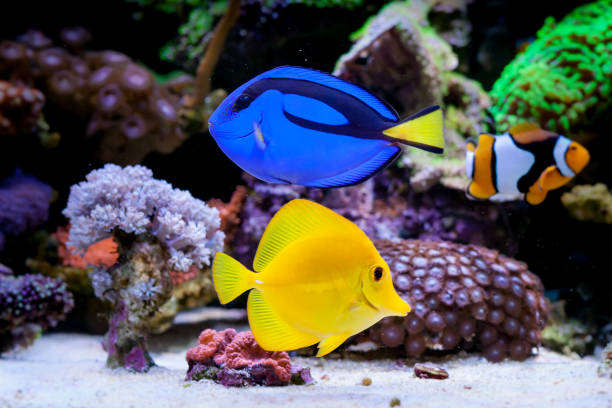Are you ready to dive into the fascinating world of freshwater shrimp keeping? Whether you’re a teenager looking for a cool new hobby or a retiree seeking a relaxing pastime, caring for freshwater shrimp can be an incredibly rewarding experience. In this guide, we’ll take you through the essential steps to become a shrimp-keeping pro. From setting up the perfect habitat to mastering their nutritional needs and even breeding these tiny aquatic wonders, we’ve got you covered.
Getting Started: Choosing the Right Shrimp Species

Before you embark on your shrimp-keeping journey, you’ll need to decide which shrimp species to keep. Here are a few popular choices:
1. Red Cherry Shrimp (Neocaridina davidi)
The vibrant red color of these shrimp adds a pop of color to your aquarium.
2. Amano Shrimp (Caridina multidentata)
Known for their algae-eating prowess, Amano shrimp are excellent tank cleaners.
3. Crystal Red Shrimp (Caridina cantonensis)
These shrimp exhibit striking patterns and are considered a bit more challenging to keep.
4. Ghost Shrimp (Palaemonetes spp.)
Budget-friendly and easy to find, ghost shrimp are great for beginners.
Once you’ve chosen your shrimp species, it’s time to create the perfect home for them.
Setting Up the Perfect Habitat

Tank Size and Equipment
The size of your tank will depend on the species you choose, but a 10-gallon tank is usually a good starting point. Ensure you have the following equipment:
- Filter: A gentle filter to prevent shrimp from getting sucked in.
- Heater: Maintain a stable temperature between 72-78°F (22-26°C).
- Substrate: Use a fine-grain substrate, like sand or specialized shrimp substrate.
- Plants and Decor: Add live plants and hiding spots for your shrimp to explore.
Water Parameters
Shrimp are sensitive to water conditions, so it’s vital to monitor and maintain:
- pH: Aim for a slightly acidic pH of 6.5-7.5.
- Ammonia and Nitrites: Keep these levels at zero.
- Nitrates: Keep nitrates below 20 ppm through regular water changes.
Filtration and Aeration
A sponge filter is an excellent choice for shrimp tanks, as it provides gentle filtration without harming the shrimp. Also, ensure proper aeration for oxygenation.
Water Quality Management
Nitrogen Cycle Essentials
Understanding the nitrogen cycle is crucial. Beneficial bacteria break down ammonia into nitrites and then into nitrates. Cycling your tank before adding shrimp is essential to ensure their safety.
Regular Water Testing
Invest in a water testing kit to monitor ammonia, nitrites, and nitrates regularly. Keeping these levels in check is vital for your shrimp’s well-being.
Water Changes and Maintenance
Regular water changes (about 10-20% weekly) help remove accumulated nitrates and maintain water quality. Use a dechlorinator to treat tap water before adding it to your tank.
Feeding and Nutrition
Nutritional Needs of Freshwater Shrimp
Shrimp have a diverse diet, including algae, detritus, and even some biofilm. To replicate this diet in captivity, provide:
- Algae Wafers: These are an excellent source of nutrition.
- Blanched Vegetables: Zucchini, spinach, and cucumber are favorites.
- Specially Formulated Shrimp Pellets: Ensure they contain essential nutrients.
Feeding Frequency
Feed your shrimp sparingly, 2-3 times a week. Avoid overfeeding, as excess food can lead to water quality issues.
Supplemental Foods
Occasional treats like brine shrimp, daphnia, or bloodworms can be given for variety and enrichment.
Health and Disease Management
Common Health Issues
Shrimp may face issues like molting problems, bacterial infections, or fungal infections. Look out for signs like lethargy or discoloration.
Preventive Measures
- Maintain stable water parameters.
- Quarantine new shrimp to prevent introducing diseases.
- Provide a calcium source for molting (crushed coral or cuttlebone).
Treatment Options
For minor health issues, consider natural remedies like Indian Almond Leaves or aquarium salt. In severe cases, consult a veterinarian specializing in aquatic animals.

Breeding Freshwater Shrimp
Breeding freshwater shrimp can be an exciting aspect of shrimp keeping. Here’s how to get started:
Conditions for Successful Breeding
- Provide hiding spots for baby shrimp to avoid predation.
- Maintain stable water conditions.
- Ensure proper nutrition for both adults and juveniles.
Caring for Shrimp Larvae
Baby shrimp, or fry, are tiny and vulnerable. To help them thrive:
- Feed them powdered or liquid fry food.
- Maintain pristine water quality.
- Keep their environment free of predators.
Tankmates and Compatibility
Compatible Tankmates
Some fish and invertebrate species can coexist peacefully with shrimp:
- Neon Tetras: Small, peaceful fish.
- Otocinclus Catfish: Algae eaters that won’t harm shrimp.
- Snails: Like Nerite snails, which are safe for shrimp.
Potential Conflicts
Be cautious with aggressive fish species like bettas or cichlids, as they may view shrimp as a tasty snack. Monitor interactions closely.
Conclusion
With the right knowledge and care, mastering the art of freshwater shrimp keeping is within your reach. Whether you’re a teenager fascinated by aquatic life or a retiree seeking a tranquil hobby, shrimp keeping offers endless opportunities for discovery and enjoyment. Remember, responsible care is key to the health and happiness of your aquatic companions. So, go ahead, set up your shrimp tank, and embark on this exciting aquatic adventure. Your shrimp friends will thank you for it.
Additional Resources
Contact:
Hi, I’m Rob, an experienced aquarium fish keeper with a passion for aquatic life. If you have any questions or need further guidance on shrimp keeping, feel free to reach out to me with the Contact form Below.
Happy shrimp keeping!
ChasingNemo.com is a participant in the Amazon Services LLC Some of the links in our posts are affiliate links. Click Here For Full Disclosure.







